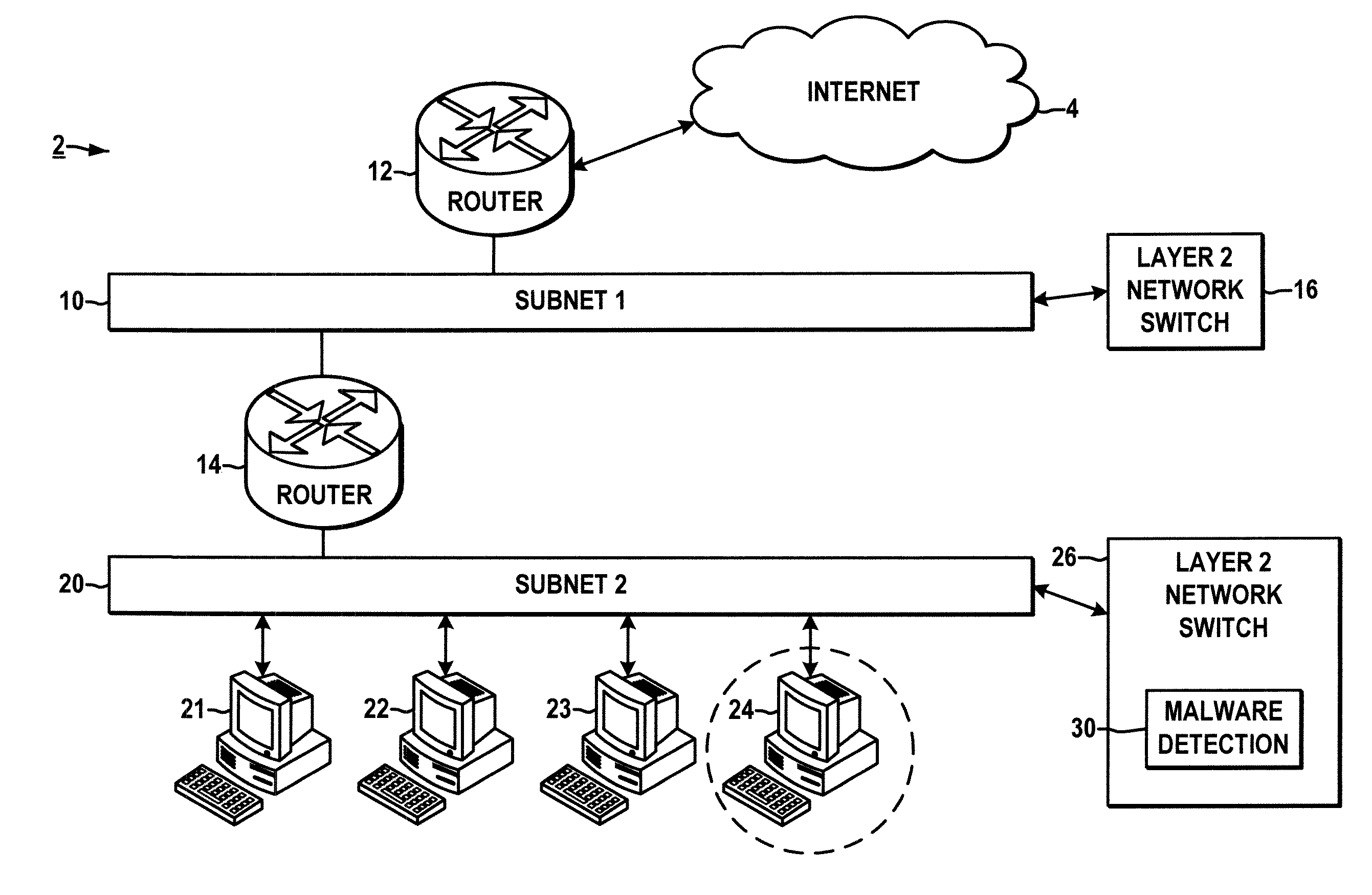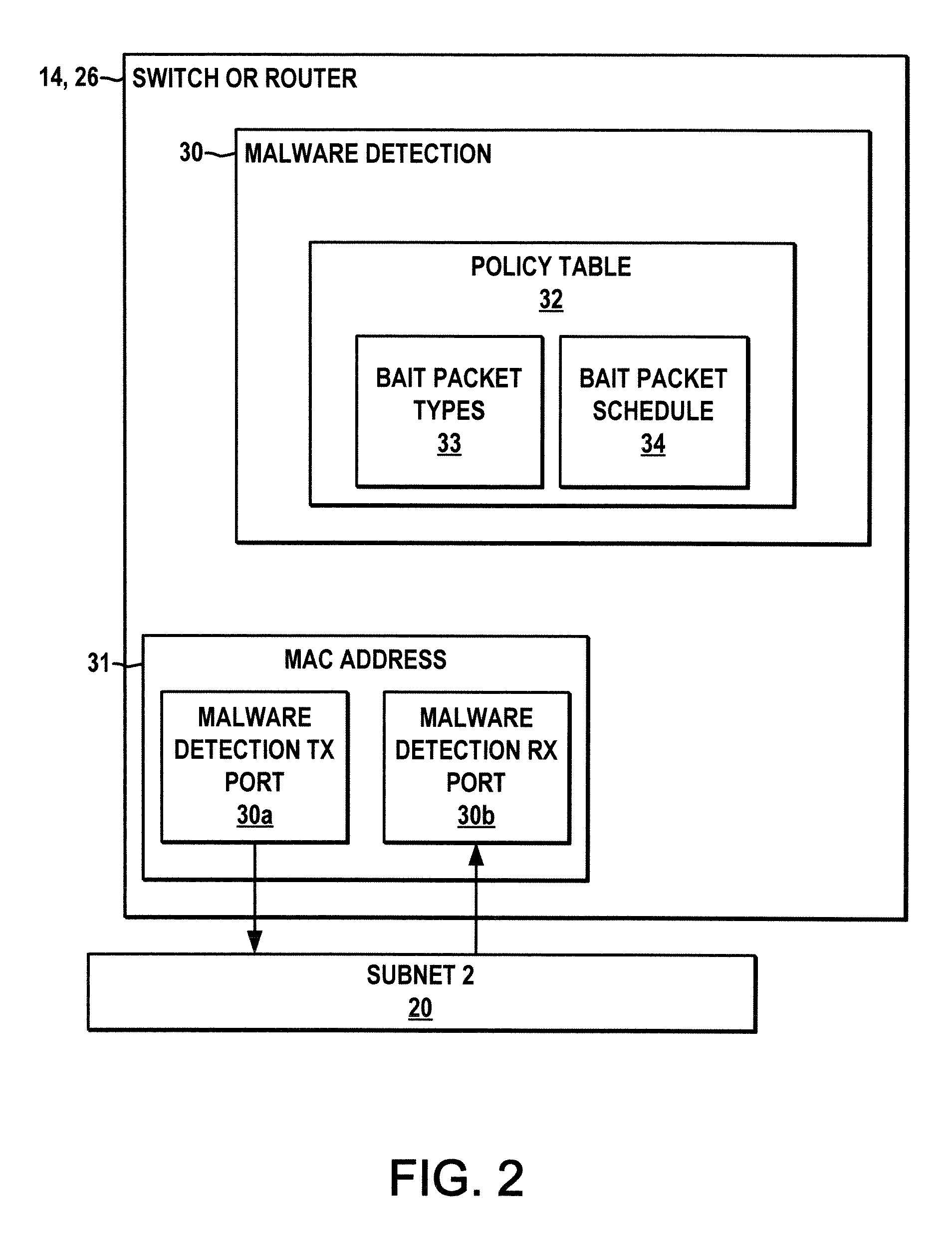Malware detection system and method
a malware detection and malware technology, applied in the field of networked communication, can solve the problems of affecting the detection of malware, and affecting the effectiveness of malware detection techniques, so as to facilitate the basic understanding and minimize the likelihood of false positives
- Summary
- Abstract
- Description
- Claims
- Application Information
AI Technical Summary
Benefits of technology
Problems solved by technology
Method used
Image
Examples
Embodiment Construction
[0011]Several embodiments or implementations of the various aspects of the present disclosure are hereinafter illustrated and described in conjunction with the drawings, wherein like reference numerals are used to refer to like elements.
[0012]Referring initially to FIG. 1, an exemplary system is illustrated for detecting malware infected computing devices 24 in a network 2. The network 2 includes any number of operatively interconnected computing devices communicatively coupled with one another via one or more wired and / or wireless connections for exchanging various signals, messages, packets, etc. with one another, wherein only a certain number of devices and interconnections are shown in the figure so as not to obscure the various aspects of the present disclosure.
[0013]The illustrated network 2 includes a first subnet 10 that is operatively connected to the Internet 4 via a first router (e.g., layer 3 switch) 12, and a second subnet 20 connected to the first subnet 10 via a secon...
PUM
 Login to View More
Login to View More Abstract
Description
Claims
Application Information
 Login to View More
Login to View More - R&D
- Intellectual Property
- Life Sciences
- Materials
- Tech Scout
- Unparalleled Data Quality
- Higher Quality Content
- 60% Fewer Hallucinations
Browse by: Latest US Patents, China's latest patents, Technical Efficacy Thesaurus, Application Domain, Technology Topic, Popular Technical Reports.
© 2025 PatSnap. All rights reserved.Legal|Privacy policy|Modern Slavery Act Transparency Statement|Sitemap|About US| Contact US: help@patsnap.com



